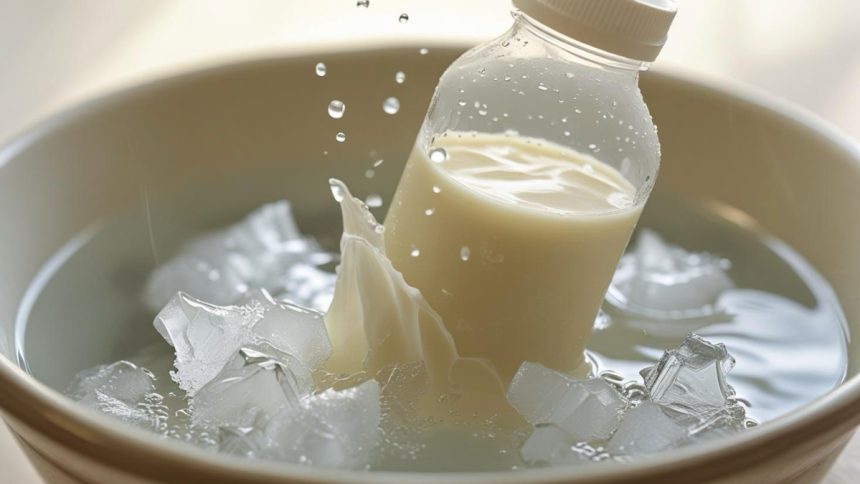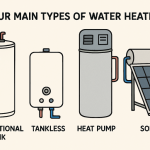Breast milk is a nutritional powerhouse that provides your baby with vital antibodies and nutrients, especially during the early months of life. But when breastfeeding directly isn’t always possible—whether due to work, health, or personal reasons—moms rely on pumping, storing, and later thawing and warming breast milk. Doing this the right way is essential to ensure safety, maintain nutritional integrity, and support your baby’s development.
In this comprehensive guide, we’ll explore proper thawing and warming techniques, storage guidelines, feeding methods, and common hygiene tips to help you safely manage your breast milk supply.
Understanding Different Types of Breast Milk: Colostrum, Transitional, and Mature Milk
Breast milk changes in composition from birth onward, adjusting naturally to meet your baby’s needs at each stage of development:
- Colostrum: This “first milk” appears during the initial days postpartum. Thick, yellow, and packed with antibodies, it protects your newborn’s digestive system and strengthens immunity.
- Transitional Milk: Occurs around days 4–10. It contains more fat and lactose than colostrum and bridges the nutritional gap between colostrum and mature milk.
- Mature Milk: Comes in fully around the second week. It consists of foremilk (thin and watery to quench thirst) and hindmilk (rich in fat for growth).
Each type of milk serves a different purpose, and knowing how to store and handle them correctly is critical.
Best Practices for Expressing Breast Milk Safely
Expressing milk is more than just pumping—it’s about ensuring the milk remains clean, safe, and suitable for your baby’s consumption. Here are key tips:
- Wash your hands thoroughly before touching any pump parts or storage containers.
- Sterilize pumps, bottles, flanges, and all accessories after every use.
- Use clean, BPA-free breast milk storage containers or pre-sterilized milk bags.
- Label milk with the date and time of expression.
Establishing a hygienic routine not only keeps your milk safe but also helps you track and rotate your stored supply effectively.
Proper Storage Guidelines for Various Breast Milk Types
The safety and quality of breast milk largely depend on how it’s stored. Breast milk can be safely kept at room temperature, in the fridge, or frozen depending on how soon it will be used.
Recommended Storage Durations:
- Room Temperature (up to 77°F or 25°C): Safe for up to 4 hours.
- Refrigerator (up to 39°F or 4°C): Use within 4 days.
- Freezer (0°F or −18°C and colder): Ideal within 6 months, acceptable up to 12 months.
Always store breast milk in small amounts (2–4 ounces) to avoid waste. Position it at the back of the fridge or freezer where the temperature remains constant.
Thawing and Warming Breast Milk: Maintaining Nutrient Integrity
When it’s time to use frozen milk, it’s crucial to thaw and warm it properly. Breast milk contains live antibodies and enzymes that are heat-sensitive, so aggressive warming can diminish its benefits.
How to Thaw Frozen Breast Milk:
- Refrigerator Method (Preferred): Move the frozen milk to the refrigerator and let it thaw slowly over 12–24 hours.
- Cold Water Bath: Submerge the milk container in a bowl of cold water, then gradually add warmer water to speed up the process.
- Under Running Water: Hold the sealed container under lukewarm running water for quicker thawing.
Avoid thawing milk at room temperature or in the microwave, as this can destroy nutrients and create uneven heating (hot spots).
How to Warm Breast Milk Safely:
- Use a bowl of warm water: Place the milk container in a bowl and let it sit until it reaches body temperature.
- Use a bottle warmer: Designed to gently and evenly heat milk without overheating.
- Swirl gently to mix any separated fat—never shake, as this may degrade proteins.
Discard any unused milk that has been thawed for more than 24 hours or milk left out for 2+ hours post-warming.
Feeding Methods: Syringe, Cup, Finger Feeding, and Bottle Feeding
Feeding your baby expressed milk doesn’t always require a bottle. Different methods can suit different stages and needs:
- Syringe feeding: Perfect for premature infants or when feeding very small amounts of colostrum.
- Cup feeding: A gentle method that avoids nipple confusion, especially useful in the early weeks.
- Finger feeding: Involves using a feeding tube attached to your finger to encourage sucking.
- Bottle feeding: Choose slow-flow nipples to simulate breastfeeding pace and prevent overfeeding.
Always monitor your baby for hunger and fullness cues, such as rooting, sucking fingers, or turning away when full.
Hygiene and Safety Tips for Breast Milk Handling
Cleanliness is vital when handling and feeding stored breast milk. Follow these hygiene tips to prevent bacterial contamination:
- Wash hands thoroughly before expressing, transferring, or feeding milk.
- Sterilize all pump parts and feeding equipment daily.
- Avoid touching the inside of bottle caps, nipples, or milk storage bags.
- Store milk in designated clean containers, and don’t mix freshly expressed milk with already cooled or frozen milk unless properly chilled first.
When feeding, always smell and visually inspect the milk. Spoiled breast milk may have a sour or rancid odor. Note that some stored milk may smell soapy due to high lipase content—this is safe, but some babies may dislike the taste.
Supporting Milk Supply and Overcoming Feeding Challenges
Managing a frozen milk stash can sometimes cause concerns about milk supply. Here’s how to support it while pumping:
- Stay hydrated and maintain a balanced diet.
- Pump on schedule—ideally, mimic your baby’s feeding times.
- Use breast compression or massage to improve milk flow.
- Get plenty of rest and reduce stress to promote oxytocin release.
- Do skin-to-skin contact or nurse your baby often if possible.
If you’re facing persistent challenges like clogged ducts, low supply, or baby refusing warmed milk, consult a lactation consultant or pediatrician for expert advice.
Conclusion
Safely thawing and warming breast milk ensures that your baby receives the maximum nutritional and immune benefits with every feed. From understanding milk types and proper storage techniques to learning how to warm milk without damaging its delicate properties, following evidence-based guidelines is key to making the most of your breastfeeding journey.
Whether you’re storing precious drops of colostrum or managing a full freezer stash of mature milk, keeping hygiene top of mind and using the right tools will give you peace of mind. For more detailed guidance on breast milk handling, visit this helpful resource on how to store colostrum and know more about thawing and warming breast milk.
Lynn Martelli is an editor at Readability. She received her MFA in Creative Writing from Antioch University and has worked as an editor for over 10 years. Lynn has edited a wide variety of books, including fiction, non-fiction, memoirs, and more. In her free time, Lynn enjoys reading, writing, and spending time with her family and friends.















